Working Paper of Public Health Volume 2012 - Azienda Ospedaliera ...
Working Paper of Public Health Volume 2012 - Azienda Ospedaliera ...
Working Paper of Public Health Volume 2012 - Azienda Ospedaliera ...
You also want an ePaper? Increase the reach of your titles
YUMPU automatically turns print PDFs into web optimized ePapers that Google loves.
<strong>Azienda</strong> <strong>Ospedaliera</strong> Nazionale“SS. Antonio e Biagio e Cesare Arrigo”<strong>Working</strong> <strong>Paper</strong> <strong>of</strong> <strong>Public</strong> <strong>Health</strong>nr. 14/<strong>2012</strong>1. Decision making processLet us imagine a patient, a sick person who needs appropriate care. Obviously, assuming thatthere is an information gap, this person will go to his/her general practitioner in order toreceive appropriate medical treatment. An exchange <strong>of</strong> information occurs. On one side, thepatient shows the symptoms <strong>of</strong> that disease whereas, on the other side, the practitioner makesa diagnosis.According to Arrow (1963), medical care is the realm <strong>of</strong> uncertainty as well as <strong>of</strong>asymmetrical information among parties, i.e. physicians and patients. Indeed, the generalpractitioner could be thought <strong>of</strong> as the link between medical care demand and supply. Thepractitioners’ medical knowledge is higher than the patients’ but, the former might not beable to make specific diagnoses or prescribe appropriate treatments since that knowledge, aswell as their personal experience, is general. In other words, a practitioner might be able torecognize and prescribe appropriate medical treatment only for simple cases, similarly towhat wise old men did in bygone ages. According to Pauly (1978), this is exactly the idea <strong>of</strong>“irreducible uncertainty” that is the state <strong>of</strong> general uncertainty about the initial health statusand effects <strong>of</strong> treatments, by both patients and physicians. This means that the generalpractitioner might easily order patients to undergo specific examinations in order to make abetter diagnosis. That is to say, a practitioner might easily delegate to another physician thepatient’s diagnosis, the prescription <strong>of</strong> medical treatment and its performance, as well as thechoice about potential hospitalization. 3In view <strong>of</strong> this, might patients be able to perceive a wrong diagnosis? In other words,considering the existence <strong>of</strong> this uncertainty, might a patient recognize the inappropriateness<strong>of</strong> a prescription? Also, how could the choice <strong>of</strong> the medical center for hospitalization bedetermined by the patient?The relationship between patient and physician is based on the trust the latter puts in theformer’s diagnosis and relative prescription. According to the behavioral approach, this trustmight be based on the patient’s previous experience. 4 In other words, if the previousprescription was effective, there will be trust in the physician’s suggestions; otherwise, if the3 To see the issue from another prospective, this might be a case <strong>of</strong> defensive medicine. Indeed, according to Danzon (2000),this delegation process might be thought <strong>of</strong> as a case in which the physician conducts procedures to be protected againstlitigation.4 Jolls et al. (1998) suggest that the probabilities will <strong>of</strong>ten be affected by how “available” other instances are and,considering the available medical options, by the previous medical events. Indeed, taking asymmetrical information intoaccount, McGuire (2000) suggests that the medical outcome (i.e. patients’ health) could be one <strong>of</strong> the patients’ key indicators<strong>of</strong> physicians’ effort.2



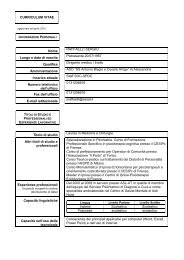
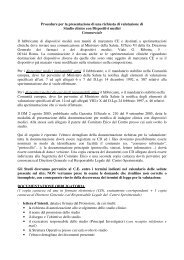

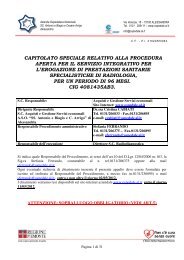
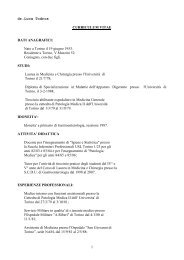
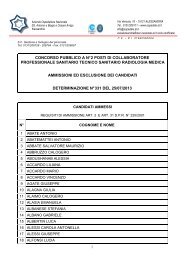

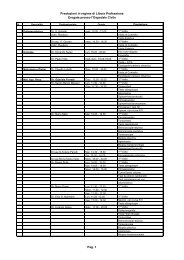


![[torino - 1] lastampa/urc/01 ... 26/10/09 - Azienda ...](https://img.yumpu.com/44058002/1/190x32/torino-1-lastampa-urc-01-26-10-09-azienda-.jpg?quality=85)


